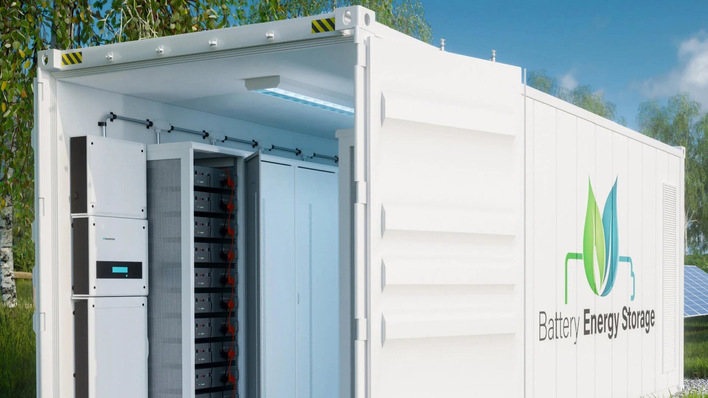In private homes, the meter is connected in series with a bidirectional meter, at the grid connection point, in order to try to cover all the consumers in the building. With larger storage units or with battery assemblies the customer might like to be able to record the consumption of just certain departments, i.e. have the meter connected to a sub-distribution.
If storage is only used to optimise self-consumption, things might be a little simpler. It is important that the technician makes a very clear decision on where best to locate the point of measurement in relation to the storage unit, which might be somewhere in the basement or in a far-off utility room.
Keep the components close together
As a matter of principle, the storage unit should be in an easily accessed utility room, as close to the electrical enclosures, solar inverters and meters as possible. The data cable from the point of measuring the consumption to the storage unit should be laid neatly, for instance through a wall duct.
Check the needs for backup supply
Before the installation, it is important to take a close look at how much power flows through the sub-distribution, and whether these work with the storage unit. The diameter of the cables can then be selected based on that.
For backup supply it is important to precisely define whether the emergency power is meant only for a certain department of the company or for all consumers. Backup systems require two cables connecting them to the central grid connection point.
How to use the meters
Pre-existing meters can usually not be reused. So-called conversion meters can often be a problem, as their orientation and the direction that the power flows through them are important. It regularly happens that current converters have to be turned around.
And since they are often mounted to copper rails, the entirety of the consuming system will need to be switched off. Also, a fuse may have to be fitted upstream of the meter, which might require the technician to gain access to the restricted utility-only part of the grid.
On DC and AC
It takes two battery cables (DC) and one grid cable (AC) to hook up the storage unit. The battery cables are connected to an external battery inverter, which in turn supplies the building with power. Or the battery inverter is already integrated in the storage system. DC-based storage batteries do not require an AC connection because they are operated exclusively on the direct current from the solar inverter. It is important to not modify the length of the wires without consulting the manufacturers. (HS)
Stay informed, get our newsletter twice a week: Register here.







